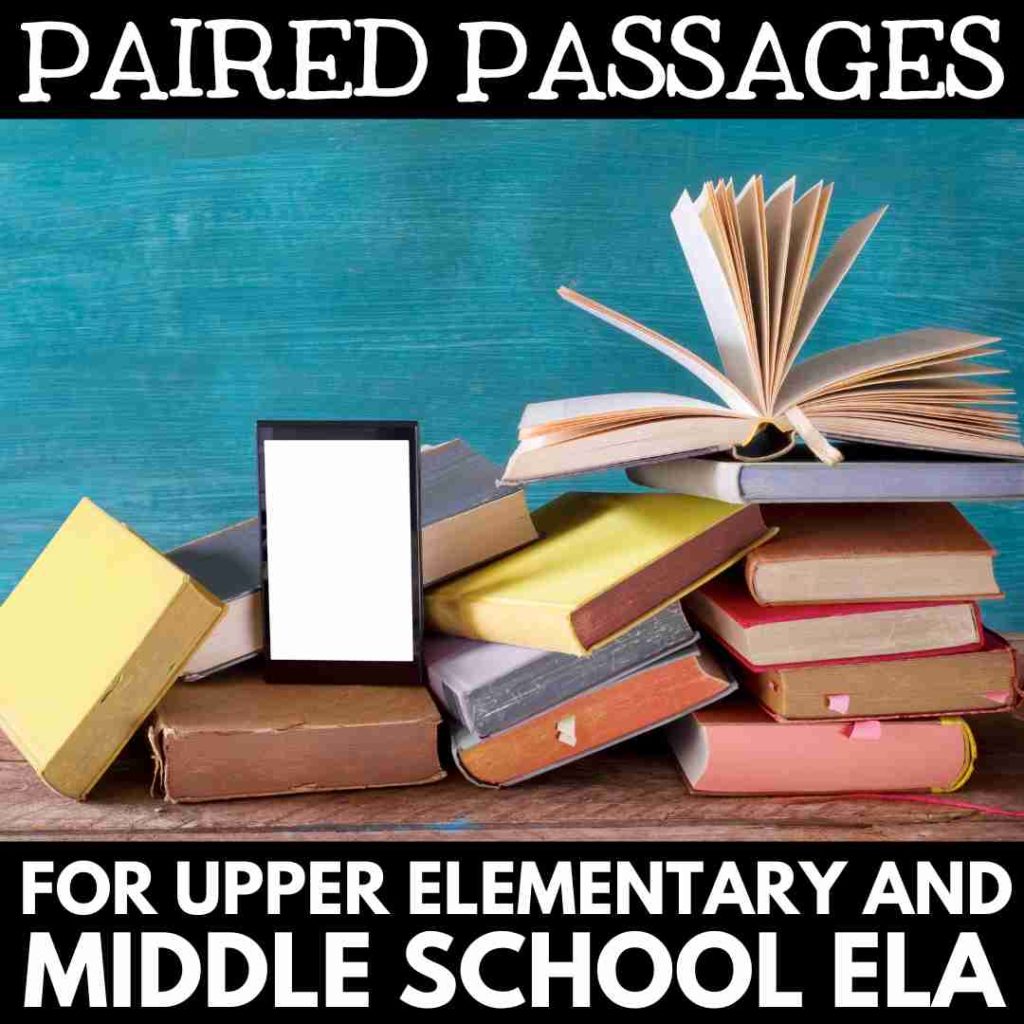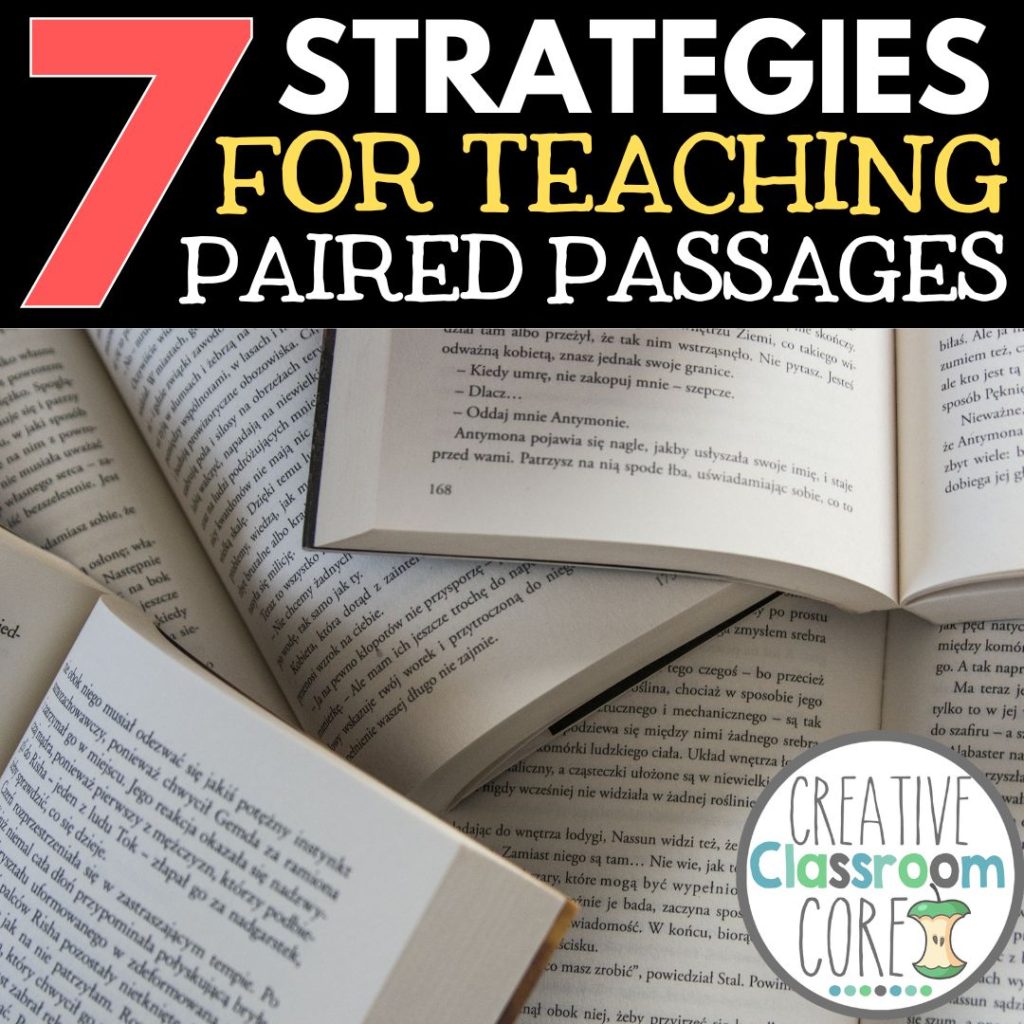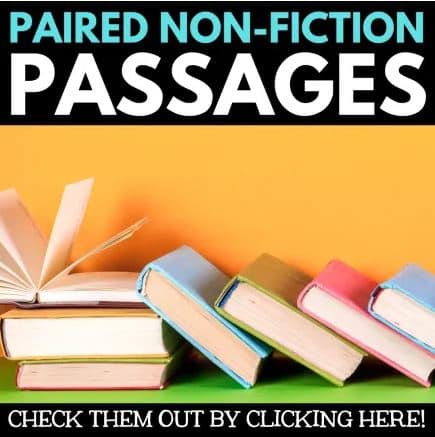7 Strategies for teaching paired passages
By MARISSA DESPINS Updated Sept 19, 2023
Teaching with paired passages
Paired passages are a newer addition to my teacher toolbox, and I have absolutely loved using them with my learners. These engaging tools help develop critical reading skills and enhance understanding of various texts and subjects.
Interested in trying paired passages in your classroom? Click on the image or button below to see all of the paired passages I have available in my TPT shop!
7 Strategies for Teaching Paired Passages
In this post, I’ve gathered 7 strategies for teaching paired passages that I have used – I hope you find some ideas to improve your teaching and inspire your students’ love for learning.
Looking for more information on paired passages? Check out our posts on using paired passages and strategies for where to find them.
Purposeful Pairing
The magic of paired passage instruction starts with the art of purposeful pairing. Selecting texts that work well with one another in terms of theme, concept, or historical context is pivotal. By intertwining fiction with non-fiction, poetry with prose, or even texts from different cultural backgrounds, you empower students to discover connections that move beyond the boundaries of individual texts. This dynamic approach encourages students to view literature as a tapestry of interconnected ideas.
Looking for places to help you curate a variety of paired passages? Check out this blog post.
Looking for novels that you can use along with your paired passages? Check out our complete list!
Scaffolded analysis
Paired passage analysis may seem daunting, but with a scaffolded approach, it becomes an attainable feat. Begin with individual close readings of each text. As you guide them towards comparing the texts, scaffold their analysis by introducing guiding questions. This incremental progression equips students with the tools to navigate the concept of paired passages, fostering critical analytical skills along the way.
Thoughtful Questioning
Questions hold the key to unlocking deep engagement. Start with factual questions that ensure comprehension of each text’s core content. Gradually, transition to higher-order questions that encourage students to delve deeper into the texts’ underlying meanings, contrasts, and connections. These questions ignite the spark of curiosity and facilitate profound discussions that help enhance student learning.
Interested in finding more about using the questioning strategy in the classroom? Check out this blog post!
Interactive Note-Taking
Empower students to take accountability for their learning through interactive note-taking. Encourage them to create visual organizers, compare-and-contrast tables, or even annotate directly in the text. As they encounter corresponding themes, characters, or literary devices, these notes serve as invaluable guides for later discussions and written responses.
Looking for more information on Interactive Notebooks? Check out this blog post!
Creative Response Activities for paired passages
Enrich paired passage learning by infusing creativity into your activities. Challenge students to step into the shoes of characters from both texts, crafting dialogues that explore how they would interact. Alternatively, invite them to reimagine the story’s conclusion or blend elements from both texts into an original narrative. These activities engage their imagination, fostering a deeper connection with the material.
Check out these creative response activities in my TPT shop by clicking here or on the image below.
These posters are some of my favorite ways to explicitly practice key reading strategies. I really like that they focus on one strategy at a time, and that they can be used with any text.
Peer Collaboration
Collaboration helps to facilitate camaraderie and growth. Because of this, it is a great idea to organize paired or small-group analysis of the passages, urging students to collaborate, discuss, and share insights. By engaging in lively conversations about connections and interpretations, students not only reinforce their understanding but also learn to appreciate diverse viewpoints.
Reflection and synthesis
Reflection is essential to meaningful learning. Encourage students to synthesize their understanding by summarizing the connections they’ve uncovered. Whether through written reflections or classroom discussions, this practice helps to reinforce their grasp of paired passages while honing their communication skills.
LOOKING FOR PAIRED PASSAGEs TO ADD TO YOUR NOVEL STUDIES?
See all of the paired passages available in my shop by clicking here or on the image below!
Looking for more Tips and tricks for ELA instruction?
Check out the blog posts below!
Using non-fiction paired passages to enhance novel studies
Non-fiction paired passages – Where do I find them?
Middle School Novel Study Favorites
Upper Elementary Novel Study Favorites
Benefits of Teaching Novel Studies
Interested in signing up for my email list?
If you are interested in signing up for my email list, you can do so by clicking on the link below. I periodically send out emails with free resources, teaching tips, and exclusive deals. Signing up will also give you immediate access to some of my best selling Interactive Notebook resources – foldable activities, graphic organizers, and other fun activities.











